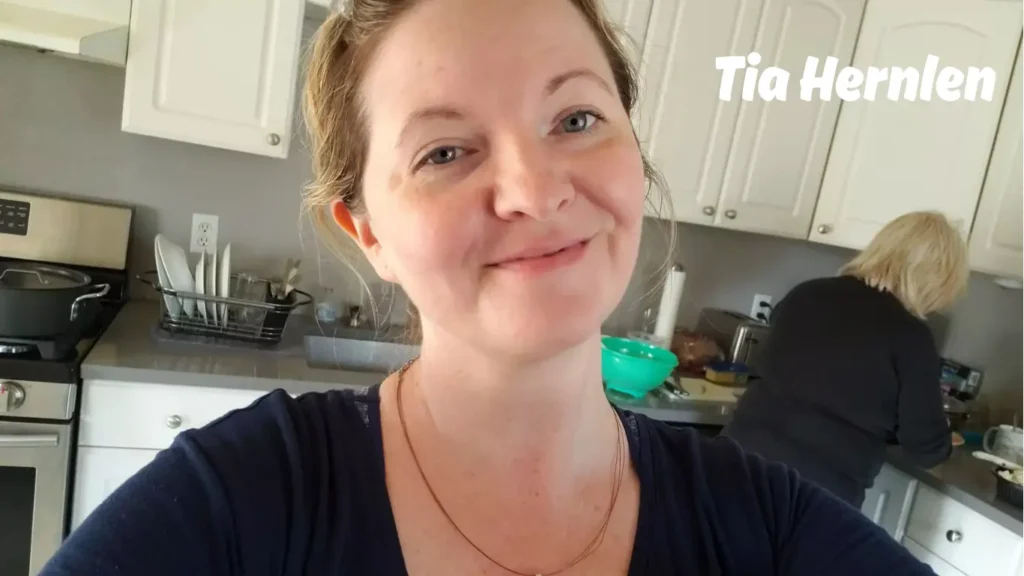What would you do if, at just 5 years old, you woke up to gunshots—and your parents lying motionless on the floor?
For Tia Hernlen, this wasn’t a nightmare. It was her heartbreaking reality one early morning in March 2005. The voice of a little girl calmly calling 911, describing a scene no child should ever witness, shocked a nation and sparked conversations around justice, domestic violence, and system failure.
If you’re here searching for “Tia Hernlen,” chances are you’re trying to understand what really happened, what justice was (or wasn’t) served, and why her story continues to haunt and inspire nearly two decades later. Let’s unpack the full story, piece by piece—with empathy, facts, and lessons that still matter today.
Who Is Tia Hernlen?
A Brave Little Girl Who Made a Call That Echoed Nationwide
Tia Hernlen was just 5 years old when her life changed forever. Living in Volusia County, Florida, with her loving parents, Julie and John Hernlen, Tia was thrust into national headlines after her remarkably composed 911 call went public. Her quiet, clear voice as she described what she saw sent shivers down spines across the country.
But behind that calm voice was unimaginable trauma. Her parents had been shot by a man who should have never had the opportunity to hurt them.
Let’s rewind.
The Events of That Fateful Night
A Home Invasion, a Double Shooting—and a System That Failed
On March 28, 2005, David Edward Johnson—a man the Hernlens feared and had reported multiple times—broke into their home armed with a gun. He shot both Julie and John Hernlen while they slept. Julie died at the scene. John, critically injured, later succumbed to his wounds.
And while their daughter Tia lay safe in another room, she woke to the sound of gunshots and did the only thing she knew to do: call 911.
“My mommy and daddy… there is blood coming out of them.”
—Tia Hernlen, 911 call transcript
Her calmness and bravery stunned dispatchers, the media, and the nation. But behind the tragedy lay a bigger, disturbing issue: Why was Johnson still free to commit this crime?
The Warning Signs Were There
The Hernlens Pleaded for Protection, But the System Didn’t Listen
Before the shooting, the Hernlens had filed police reports and sought legal protection from Johnson, whom they believed was stalking and threatening them. However, due to lack of evidence and a court system that often delays or denies protective orders, nothing was done in time.
Johnson had been arrested before, accused of harassment, and had shown signs of mental instability. Still, he remained free.
Shortly after committing the double shooting, Johnson died by suicide, taking the truth—and accountability—with him.
Public Reaction: A Mix of Outrage and Grief
How One Girl’s Call Became a Wake-Up Call for the Nation
The release of Tia’s 911 call struck a nerve. People were horrified—not just by the crime, but by how preventable it could’ve been.
News outlets replayed her soft voice over and over. Child psychologists, legal experts, and politicians weighed in. Social workers asked, how many more signs does it take for a system to intervene?
Tia became a symbol—not of tragedy, but of resilience. And her story led to deeper national conversations around:
- Domestic violence prevention
- The flaws in restraining order laws
- The importance of child trauma care
- How the justice system handles threats before violence occurs
What Happened to Tia Hernlen Afterward?
From National Spotlight to a Private Life
After her parents’ death, Tia was placed in the care of relatives. Her family made the choice to shield her from the media and allow her to live a quiet, protected life—away from the trauma-filled spotlight.
Though little is publicly known about her now (intentionally so), Tia would be around 24 years old today. Her story, however, is far from forgotten.
Why the Tia Hernlen Case Still Matters in 2025
Justice Isn’t Just About Punishment—It’s About Prevention
Even years later, the lessons from Tia’s tragedy remain painfully relevant. Domestic abuse, stalking, and systemic inaction still affect countless families.
This case highlights what happens when red flags are ignored, and why early intervention laws and trauma-informed support systems are essential.
It also shows us the strength of the human spirit—even in its tiniest form. A child, covered in the shadows of grief, picked up the phone, and in doing so, shined a light on everything that needed to change.
Key Takeaways from Tia Hernlen’s Story
- Tragedy Can Be Prevented: When victims speak up, systems need to listen—and act.
- Children Deserve Better Protections: In homes, in courts, and in policies.
- Silence Is Dangerous: Community awareness and support can stop violence before it escalates.
- Justice Includes Mental Health: Addressing unstable behavior early can save lives.
FAQs About Tia Hernlen
What happened to the man who shot Tia Hernlen’s parents?
David Edward Johnson died by suicide shortly after the attack, leaving behind no formal confession.
Did the Hernlens try to get help before the shooting?
Yes. They had filed reports and tried to pursue legal action, but the system failed to intervene effectively.
Where is Tia Hernlen now?
She was raised by relatives and has kept a private life since the tragedy.
Why did the 911 call become so famous?
Because it captured the voice of a child experiencing trauma in real time—highlighting both her bravery and the deep failure of the justice system.
Final Thoughts: Don’t Let the System Sleep Again
The name Tia Hernlen should be more than a Google search. It should be a reminder. Of vigilance. Of compassion. Of how broken systems hurt real people—and how one child’s voice still calls for justice, even years later.
If her story moved you, consider this: Who in your life might need help before it’s too late? Don’t wait to act. Speak up. Reach out. Advocate.
Because behind every statistic is a child, a parent, a life that matters.
